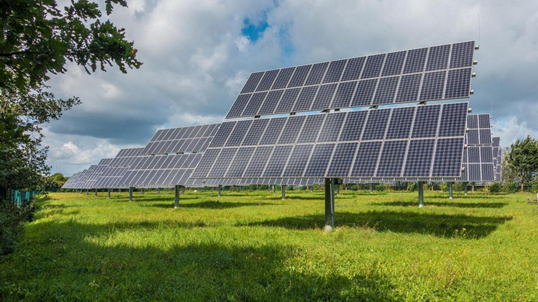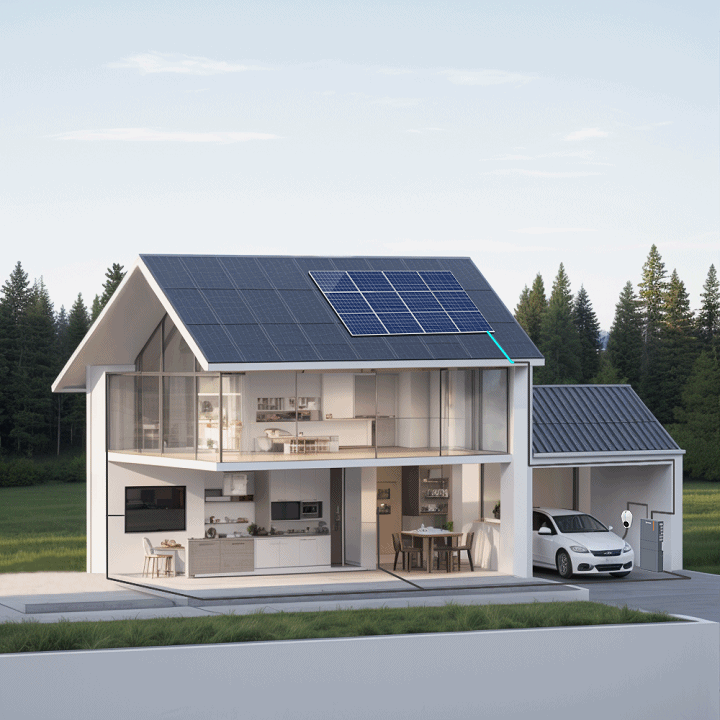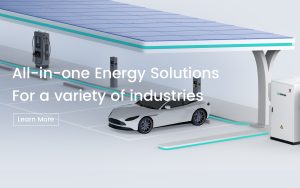
The increasing reliance on renewable energy has highlighted the potential and promise of photovoltaic (solar) power generation. However, despite its environmental benefits and growing adoption, photovoltaic power generation faces several challenges. These challenges include variability in energy production due to weather conditions, geographic differences, and the limited hours of sunlight available for generation. As a result, it is difficult to predict the exact amount of electricity generated, which complicates grid integration and supply-demand balance. Two main solutions address these issues: transmission and energy storage.
Transmission vs. Energy Storage: Solutions to Power Generation Challenges
The first solution is the construction of transmission channels to transport excess electricity from areas with surplus generation to regions where demand is high. This involves building long-distance transmission infrastructure, which requires significant investment and can be affected by geographical and technical challenges. The second, more promising solution is energy storage. By storing excess electricity during periods of high generation, it can be used when demand exceeds supply, providing a much-needed buffer to balance energy needs. Energy storage technology has emerged as a breakthrough in overcoming the development bottlenecks of the photovoltaic industry.
The Benefits of Energy Storage for Renewable Energy Integration
Energy storage systems are revolutionizing the way renewable energy can be utilized, offering numerous advantages. With the ability to store electricity, renewable energy sources, including solar and wind, can be seamlessly integrated into the grid without interruptions. Wind turbines can operate without power restrictions, and the electricity generated from solar panels can be stored for use when the sun is not shining. Microgrids, which are small-scale, localized energy systems, make communities safer by providing a stable and resilient power supply. Additionally, the concept of a smart grid is no longer just a futuristic idea but a reality that is being enabled through energy storage. By providing the ability to store energy locally, energy storage systems can help realize energy interconnection, making it easier to share and distribute power across a region. Most importantly, energy storage is positioned to replace fossil fuels as a key component in the global transformation toward sustainable energy.
Photovoltaic Applications and Energy Storage Integration
One of the most promising applications of energy storage is in the integration with photovoltaic power generation. Photovoltaic systems are increasingly being used across various industries and sectors. Ground-mounted power stations, industrial and commercial rooftops, and residential homes are all being equipped with solar panels to harness the sun’s energy. This widespread adoption of photovoltaic technology creates an ideal environment for energy storage systems, as it helps to address the inherent intermittency of solar power. Energy storage can store excess power generated during peak sunlight hours, ensuring that energy is available for use when the sun isn’t shining.
Combination of Solar Energy Storage System And EV Charger: A Sustainable Future for Transportation
The combination of photovoltaic energy storage systems and electric vehicle chargers further amplifies the potential for sustainable energy solutions. New energy vehicles, including electric cars, buses, and trucks, are rapidly becoming a critical part of the future of transportation. As the number of EVs continues to grow, so does the demand for reliable and efficient charging infrastructure. Integrating solar energy systems with EV chargers offers numerous benefits. Solar power can be used to charge EVs, reducing reliance on grid electricity and lowering the carbon footprint of transportation. In addition, energy storage can help solve some of the challenges related to grid connection and power redundancy. When excess solar energy is generated, it can be stored and used to charge EVs during periods of low sunlight or peak electricity demand. This not only provides a more sustainable and cost-effective way to charge electric vehicles but also enhances the overall efficiency of the energy system.
The Multi-Directional Development of Solar Energy, Storage, and EV Charging
At the same time, the combination of solar energy and energy storage can drive the multi-directional development of photovoltaic technology, energy storage, and EV charging solutions. This integrated approach can help to create a more robust and resilient energy ecosystem that supports the widespread adoption of clean energy solutions across different sectors. For example, a well-designed solar power and energy storage system, combined with EV chargers, can help optimize the energy flow within a household, business, or community, reducing energy costs and improving energy independence.
How iocharger is Leading the Way in EV Charging Solutions
As the market for EV chargers continues to expand, the role of companies like iocharger becomes increasingly important. iocharger offers a range of high-quality EV chargers that are designed to integrate seamlessly with solar energy and energy storage systems. Their products provide fast and efficient charging solutions for electric vehicles, helping to support the growth of sustainable transportation. With cutting-edge technology and user-friendly features, iocharger’s EV chargers can be easily integrated into homes, businesses, and public charging stations, ensuring that EV owners have access to reliable and cost-effective charging options. Additionally, iocharger’s commitment to innovation and quality aligns with the broader goal of promoting clean energy solutions and reducing the reliance on fossil fuels.

In conclusion, the combination of solar energy storage systems and EV chargers represents a crucial step toward a more sustainable and energy-efficient future. By integrating photovoltaic power generation with energy storage, we can address the challenges of intermittent energy production and create a more reliable and resilient energy grid. When combined with electric vehicle charging solutions, this integrated system provides an effective way to reduce carbon emissions, lower energy costs, and support the widespread adoption of clean energy. As the demand for renewable energy solutions continues to grow, companies like iocharger are playing a pivotal role in helping to build a sustainable energy future for all.


